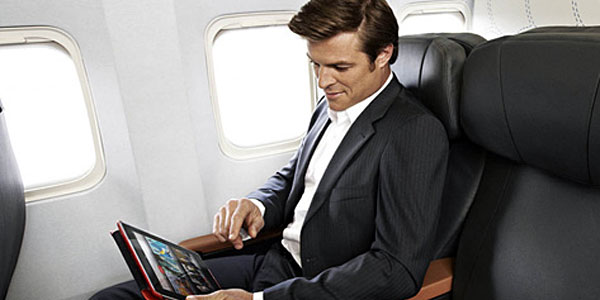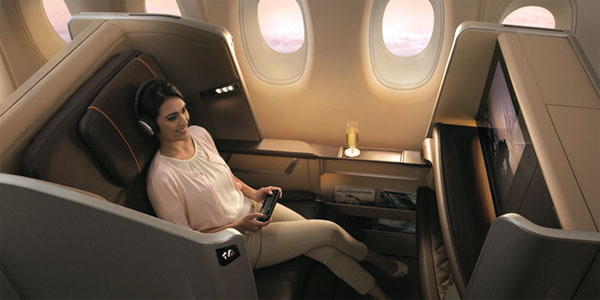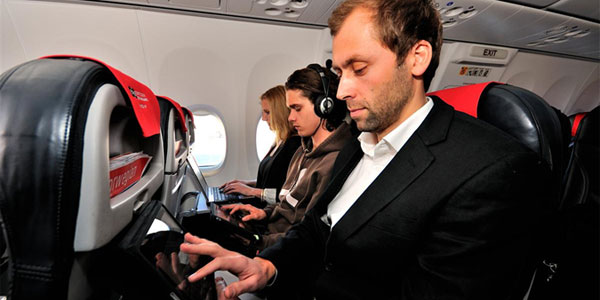
In-flight entertainment and connectivity (IFE&C) is a defining aspect of the onboard experience. The rise of wireless connectivity and the increasing trend of passengers bringing their own devices have dramatically changed the face of the in-flight passenger experience.
Whereas a selection of movies on an embedded system used to suffice, IFE&C now extends to live TV and streaming content on smartphones and tablets.
Mary Kirby, Editor-in-Chief of Airline Passenger Experience magazine, explained: “People nowadays are accustomed to sitting at home watching TV, on their iPad and checking their smartphone, and they want to have access to this in the air as well. The passenger wants to be able to do in-flight what they can do on the ground.”
There is no doubt that major strides have been made in recent times. Kirby, who will chair a session entitled ‘How will IFE&C evolve and how will stakeholders need to adapt to this fast-moving landscape?’ at FTE Global 2013’s ‘Up in the Air’ conference stream, points to both airlines and suppliers for successfully driving innovation.
“Wireless connectivity and in-flight TV is definitely an important part of the future,” she said. “The likes of jetBlue, Delta and Virgin America are already doing a great job in this area, and Southwest Airlines is also there with its TV over IP service, which allows passengers to stream live TV on their own devices. Panasonic has also led the way and they are going to add more channels to their in-flight TV service because uptake has been so high.”
Early-window content

So, if the trend of streaming content wirelessly through personal devices is here to stay, what does that mean for the future of the traditional seatback IFE systems? Kirby was keen to point out that embedded systems remain just as important.
“A key point is that the Hollywood studios do not permit early-window content streaming through personal devices,” she said. “Therefore, watching movies during that ‘early window’ – just after they have been in the theatre – can still only be done through embedded IFE systems or airline-distributed portable IFE units if approved by the studios, not passengers’ own devices. That’s critical. Until it changes, wireless will not replace embedded IFE.”
The Hollywood studios’ position on this is unlikely to change any time soon. As well as wanting to protect the healthy revenue stream that is provided through this early-window content, fears have also been raised about passengers using personal devices to illegally copy content that is intended for in-flight viewing only.
More screens, better content

So, although its appears extremely unlikely that wireless connectivity will threaten the very existence of embedded IFE, one airline, Qantas, has already opted to provide its entertainment through iPads, which are provided in every seat. However, Kirby explained that this does not necessarily set a trend for the future.
She said: “You might see some carriers forego the screen in the future, but I think what we’ll see is more screens. Look at Singapore Airlines. They’ve just invested in a brand new IFE system. There’s no way they could have just said ‘wireless is the future’ and ripped their screens out, because it would put them at a competitive disadvantage against all the other carriers. What we’re going to see is more screens, more content and better IFE.”
However, for the short-haul carriers that have traditionally overlooked IFE, wireless connectivity does provide a more viable standalone option. According to Kirby, short- and medium-haul carriers are the “sweet spot” for wireless IFE.
There is, though, a key hurdle that still needs to be overcome. “Currently, connectivity systems don’t have the capacity to serve the whole cabin,” Kirby explained. “This is why airlines are having charge relatively high rates for access to Wi-Fi. If you just give the Wi-Fi away for free, the service will degrade. jetBlue has claimed that their new service will be capable of offering an on the ground experience in the air, so it’ll be interesting to see if that’s the case.”
As airlines and IFE&C suppliers continue to look for new ways to engage and entertain the passenger in the air, one thing that’s certain is that new solutions will continue to come to light in one of the most innovative and competitive areas of the industry.

As part of FTE Global 2013’s ‘Up in the Air’ conference stream, Mary Kirby, Editor-in-Chief of Airline Passenger Experience magazine, will chair a session entitled: ‘How will IFE&C evolve and how will stakeholders need to adapt to this fast-moving landscape?’. The session will also include presentations from Air France KLM, Global Eagle Entertainment and Japan Airlines.
» View the full FTE Global 2013 ‘Up in the Air’ conference programme






